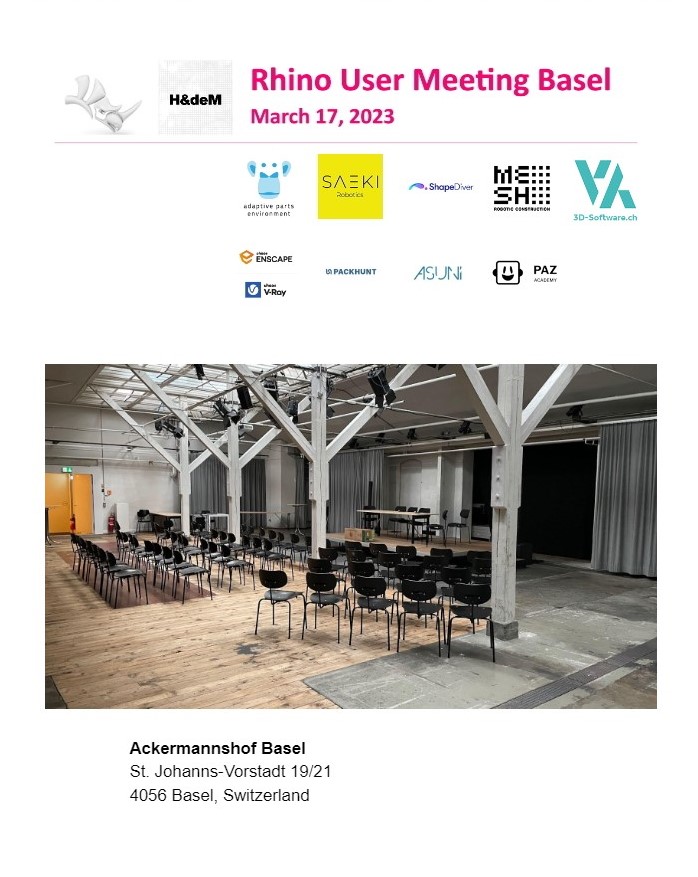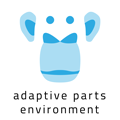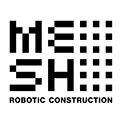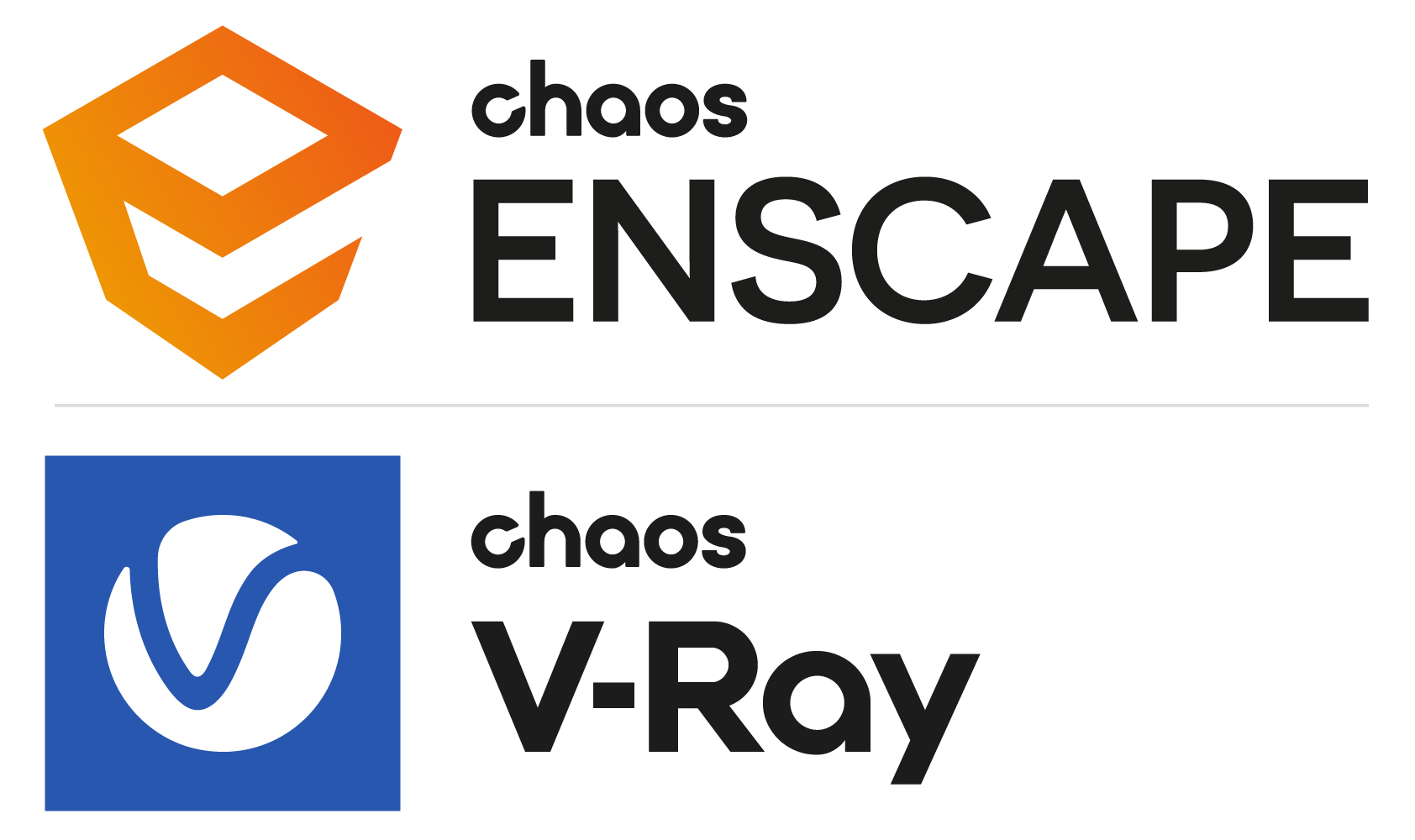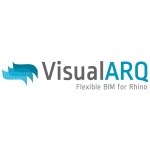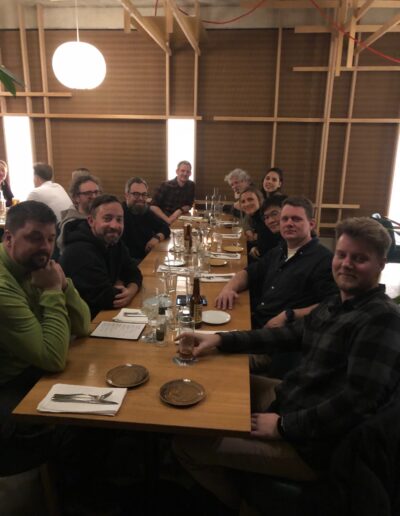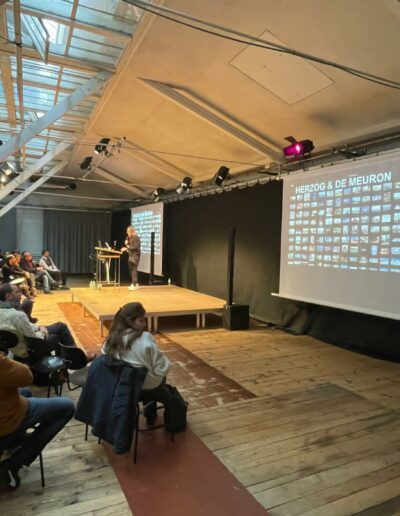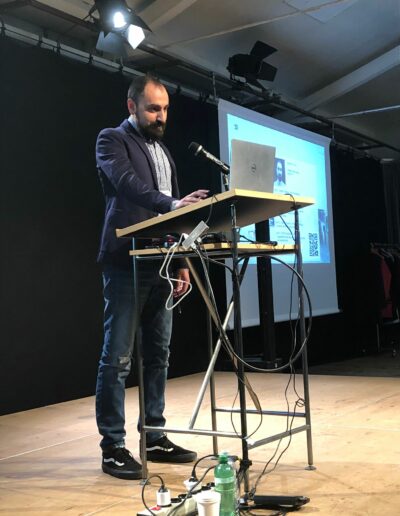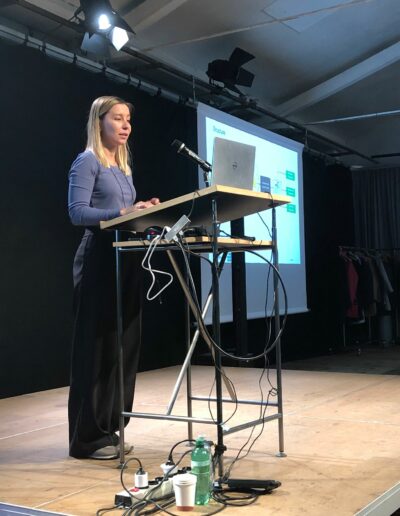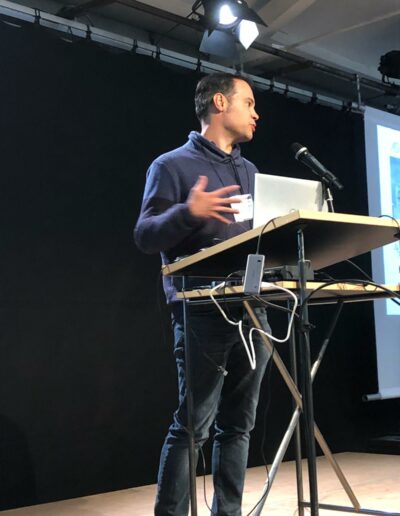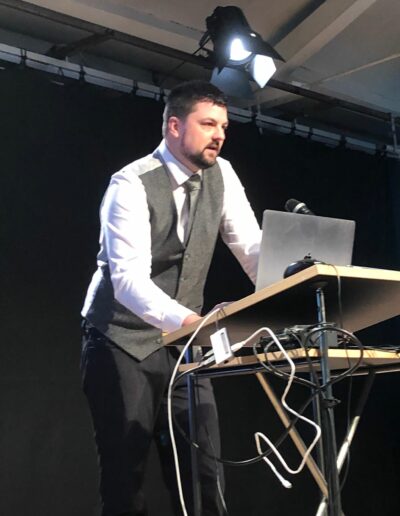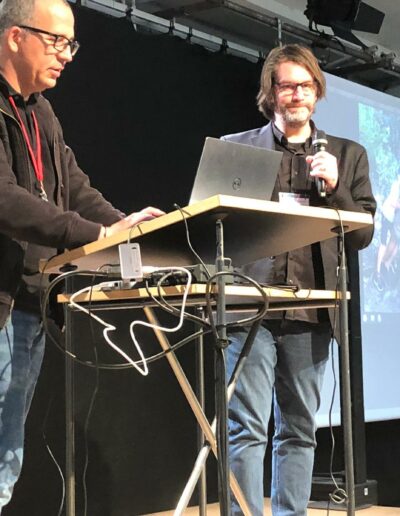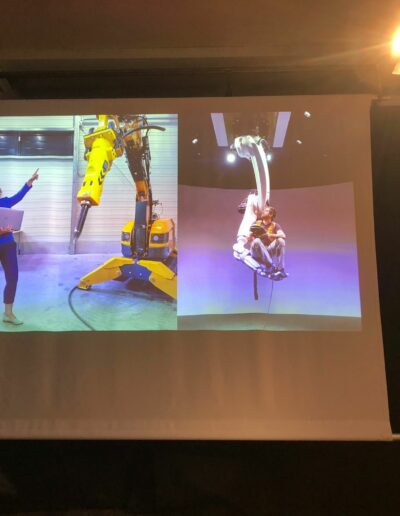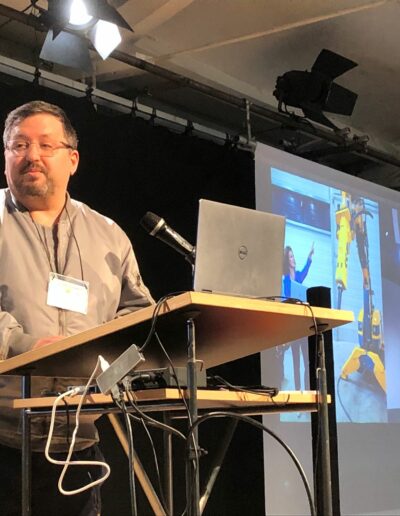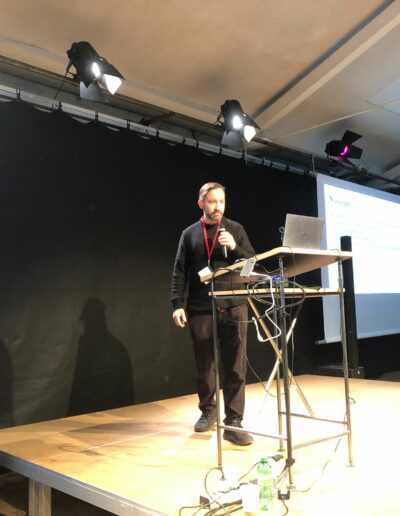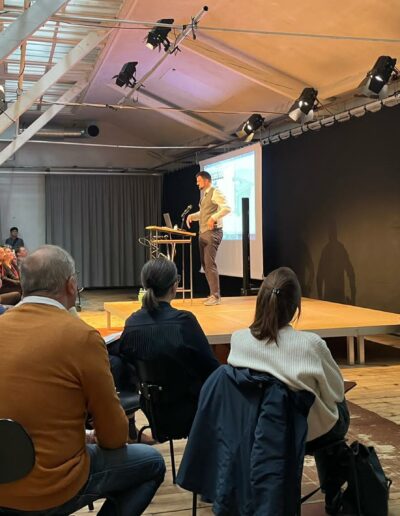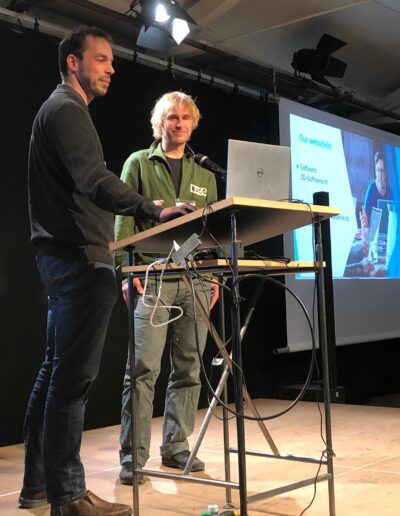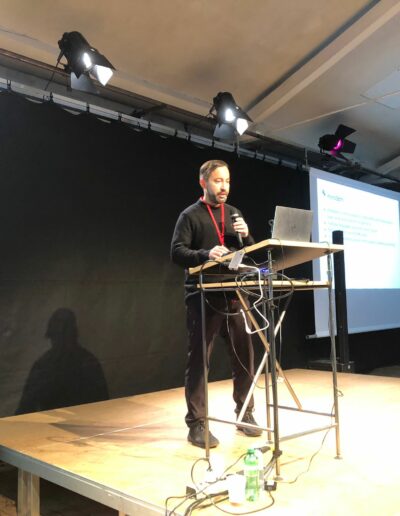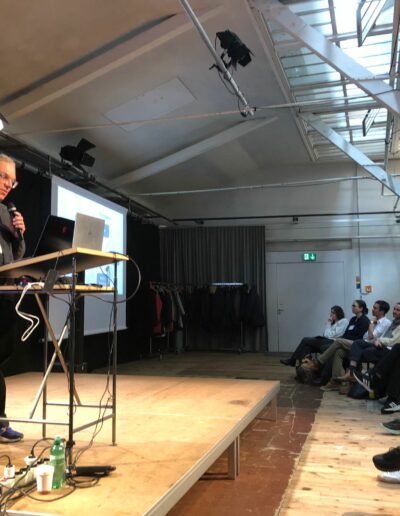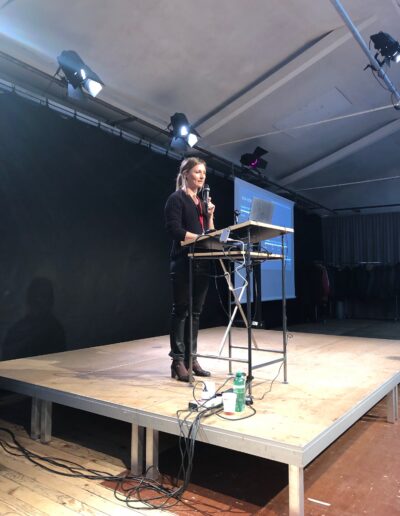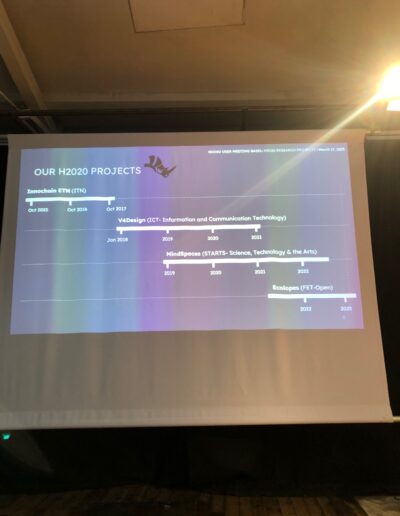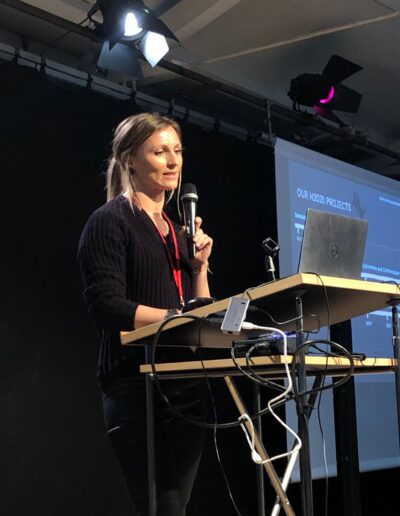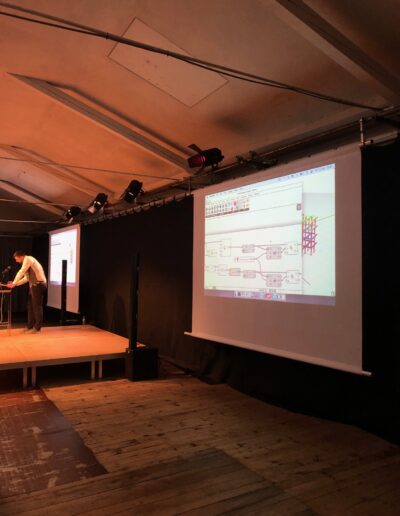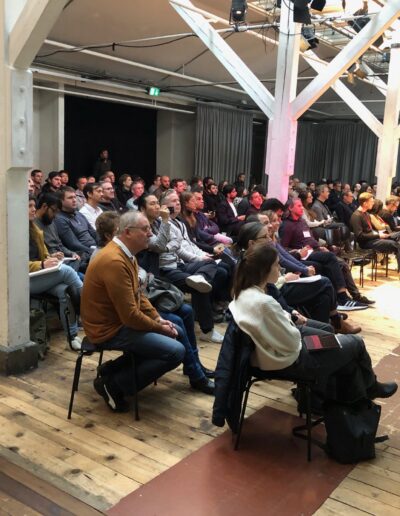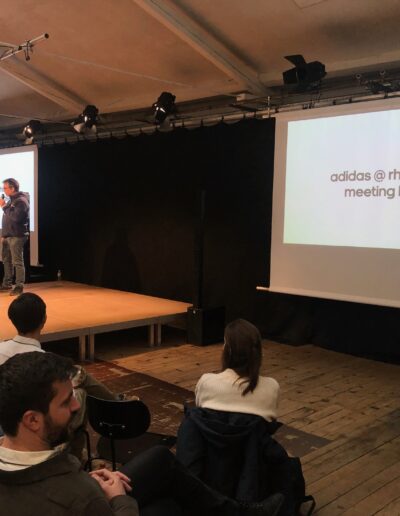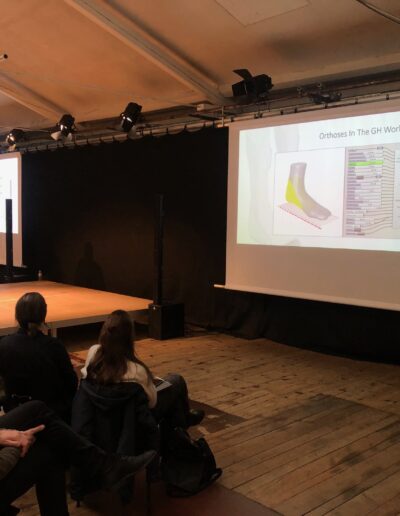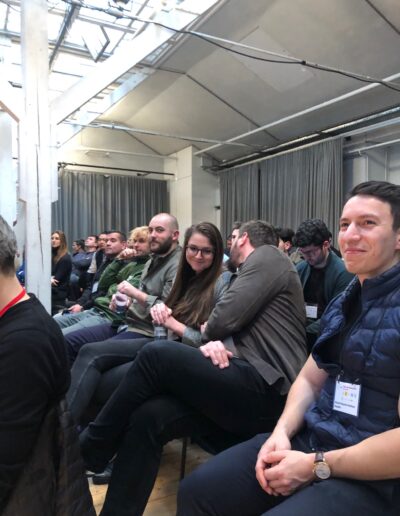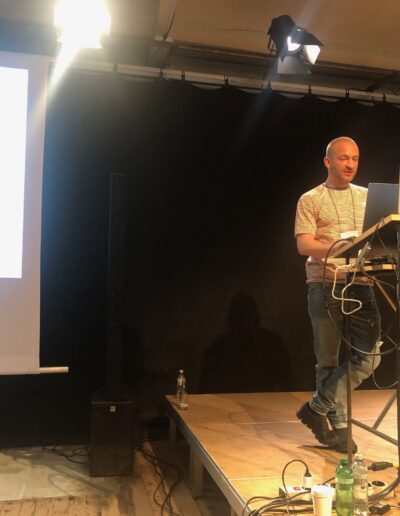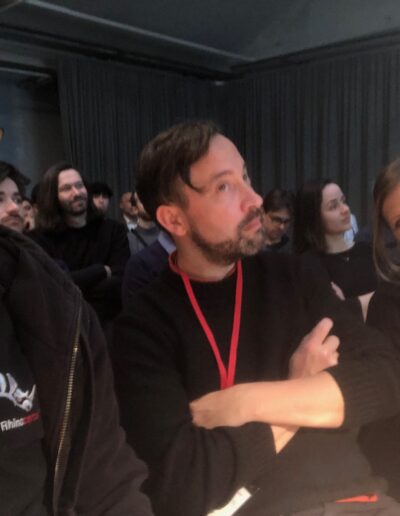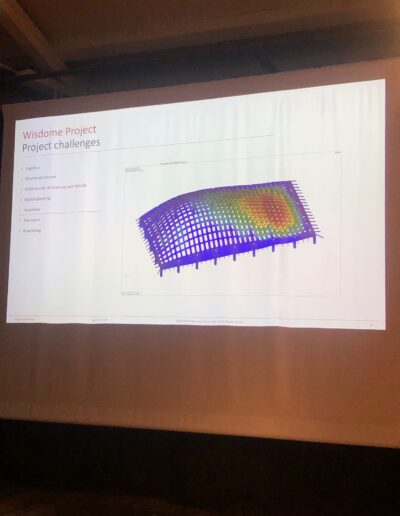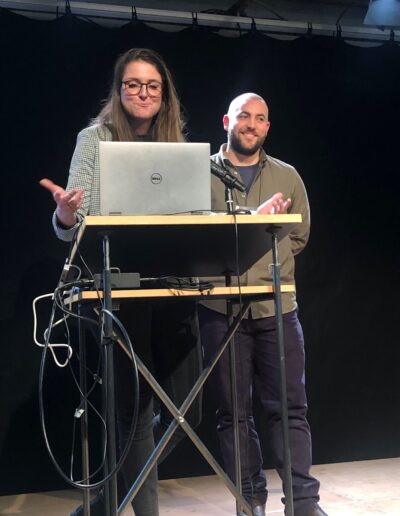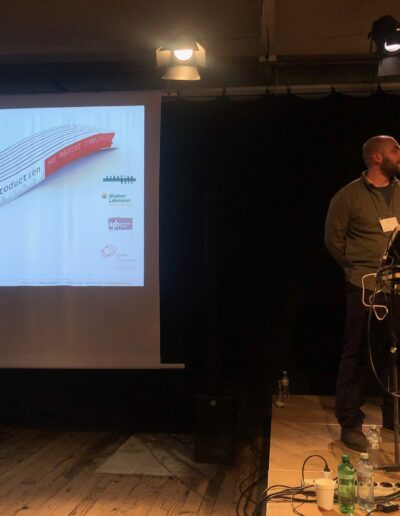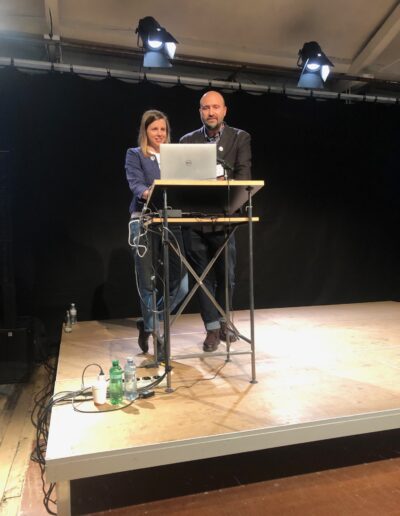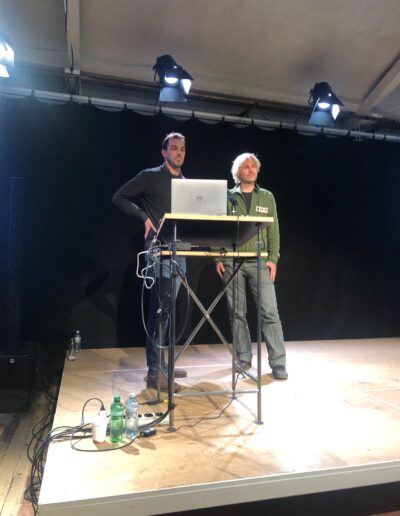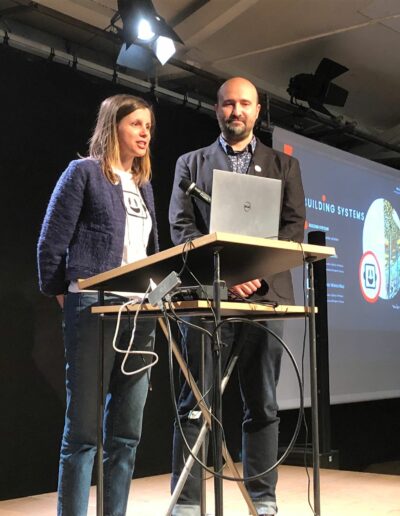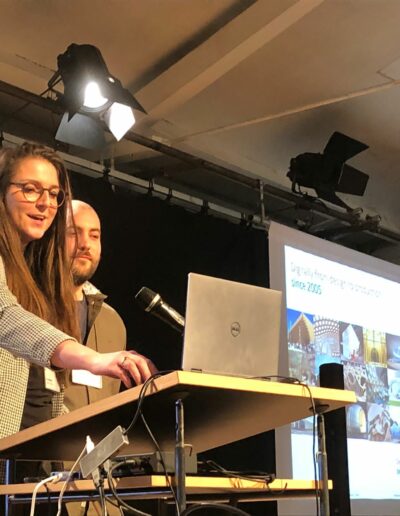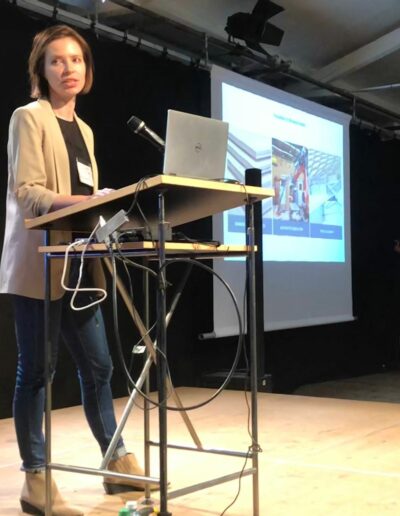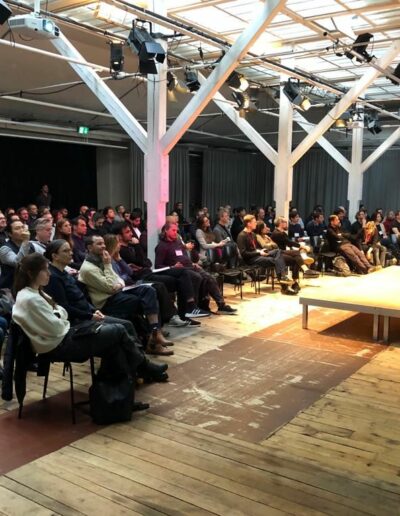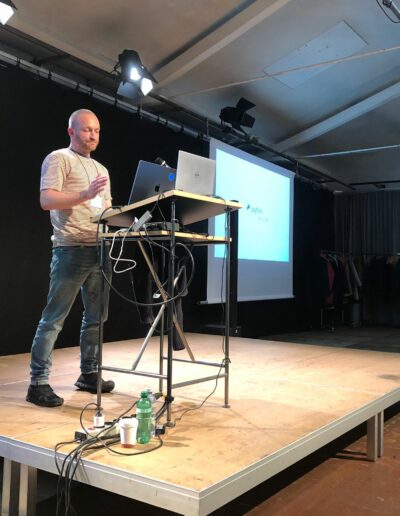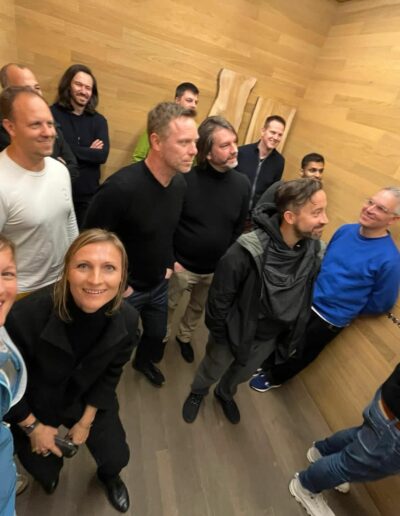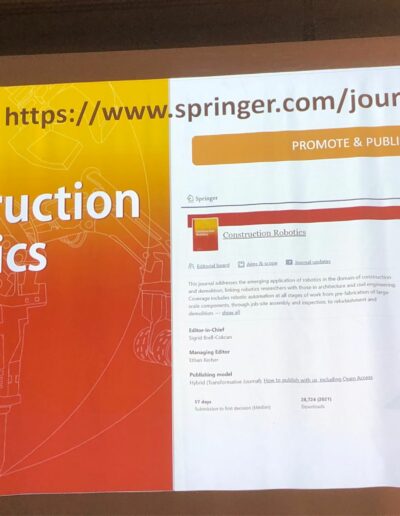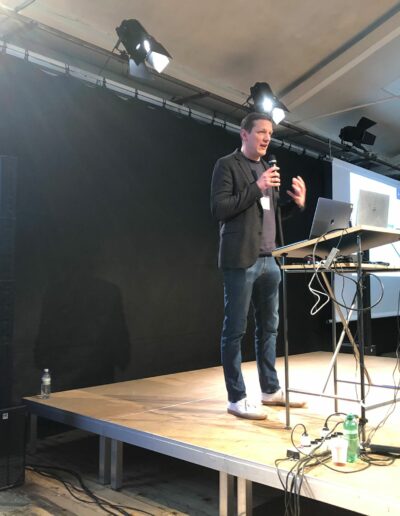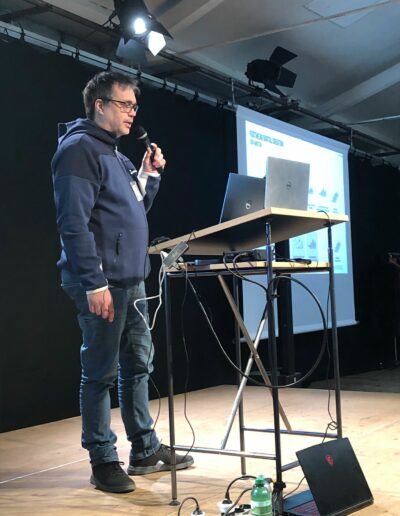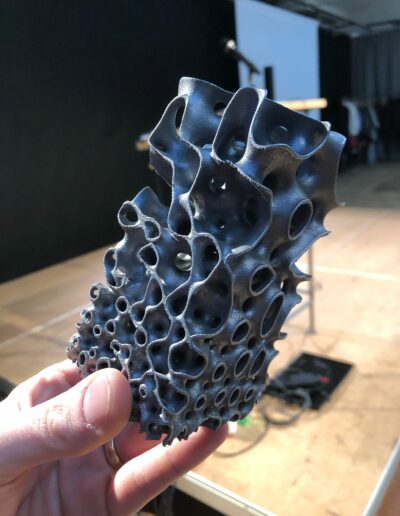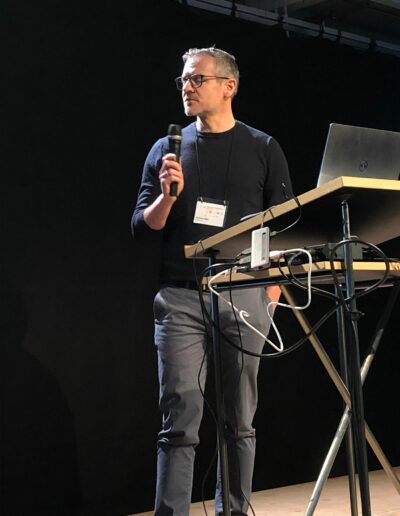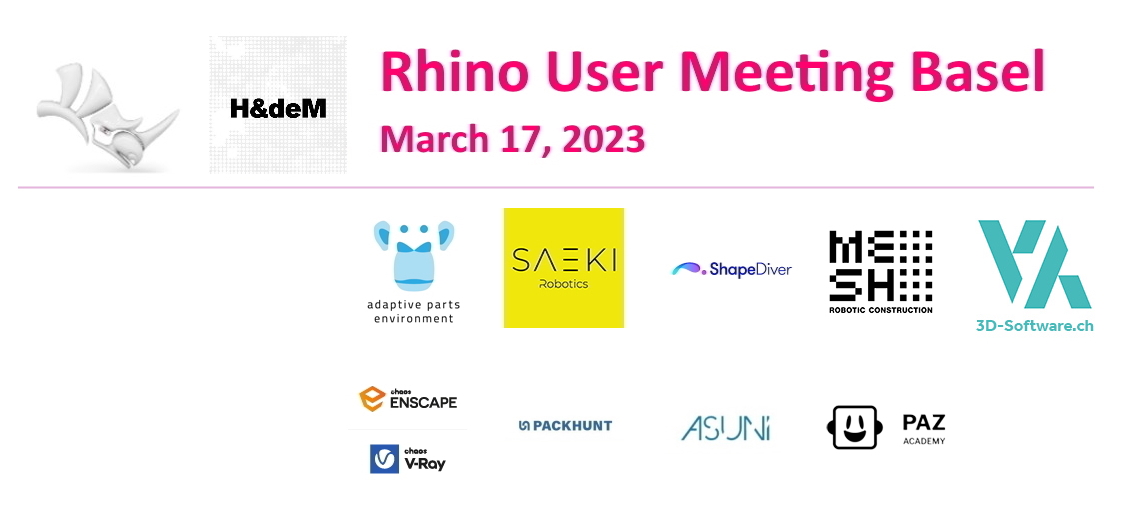
Program | Speakers | Where | Exhibitors | Photos
McNeel Europe, in collaboration with Herzog & de Meuron, organizes a Rhino User Meeting in Basel on the 17th March 2023.
Come join us and learn more about state-of-the-art Digital Design and Fabrication.
Get inspiration from industry experts in different fields: Architecture, BIM, Landscape, Design, Algorithmic Modeling, Rendering and Visualization, Footwear, Orthotics, 3D Printing, Robotic milling, Environmental Analysis and much more!
Get the latest news about Rhino WIP, Rhino.Inside, Rhino Compute, Hops, Grasshopper and food4Rhino apps..
Watch presentations and get hands-on with live software demonstrations from our exhibitor partners.
See previous events at https://events.mcneel.eu/
Contact: carlos@mcneel.com
Reports: very nice reports from Dominik Zausinger (Rhenso, Adaptative Parts Evironment) here, from Alejandro Fuentes Arias (KCAP) here. From Babette Hohrath (Packhunt.io) here.
SPEAKERS
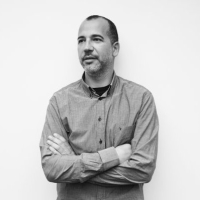
Carlos Pérez Albà
bio
Carlos Pérez Albà (Barcelona, 19th March 1975) is currently the EMEA Sales, Marketing and Business Development Manager at McNeel.
Studied Economics (Universitat de Barcelona, Otto-Friedrich Universität Bamberg), Illustration (Massana Art School Barcelona) and Management (IESE Business School Barcelona).
https://www.linkedin.com/in/carlosperezalba/ www.mcneel.com www.rhino3d.com www.food4rhino.com

David Rutten
bio
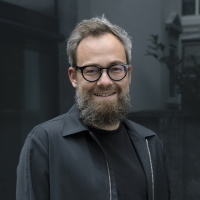
Michael Drobnik
bio
Lead Design Technologies
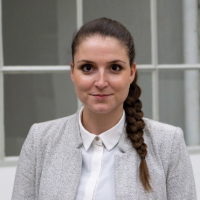
Evy Slabbinck
bio
Evy L.M. Slabbinck is the Managing Director at Design-to-Production Zurich and is as structural engineer and architect working as a consultant in the timber construction unit of the company.
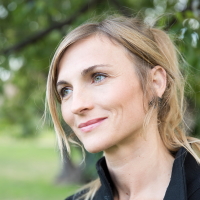
Verena Vogler
bio
Verena Vogler is an architect in research and practice. She is Head of R&D at McNeel Europe to support technological research and development activities in Horizon 2020 projects funded by the European Commission. Verena joined McNeel Europe in 2014 and is responsible for the educational course program with more than 60 realised plugin- and programming courses for Rhino users in the past years. In 2021, she received a doctorate of engineering from the Chair of Computer Science in Architecture at the Bauhaus-University Weimar for her applied research about Artificial Coral Reef Design.
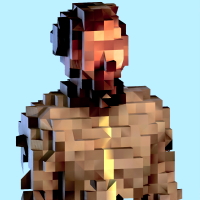
Luis Fraguada
bio
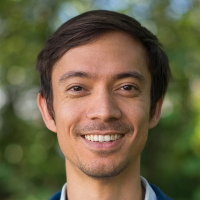
Christoph Waibel
bio
Christoph is module coordinator and researcher for the “FCL Global: Powering the City” project of the Future Cities Laboratory Singapore / ETH Zurich, and lead developer of the Hive tool, a Rhino Grasshopper plug-in for early-stage energy-integrated building design. His research focus lies in the development and integration of building simulation and hybrid surrogate models, multi-energy systems optimization models, and black-box optimization algorithms in the architectural and urban design process. Christoph has worked in industry as a programmer and 3D modeler for One to One GmbH (Frankfurt Main), as project engineer and building simulation specialist for ifes / TÜV Rheinland, and in various architectural design firms in Stuttgart.
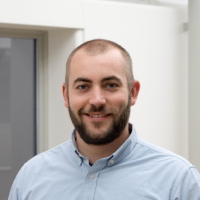
Moritz Niebler
bio
Moritz Niebler, trained as architect and carpenter, is a consultant at Design-to-Production Zurich developing digital fabrication and planning solutions for complex timber structures with a focus on design for manufacturing and assembly.

Alina Galimshina
ETH Zurich – Bombyx
bio
My name is Alina, I am a postdoctoral researcher at the Chair of Sustainable Construction at ETH Zurich. I am participating in the development of a grasshopper plugin called Bombyx, which we would like to present in this event.
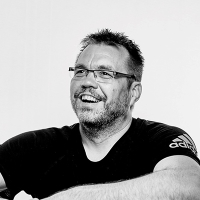
Detlef Müller
bio
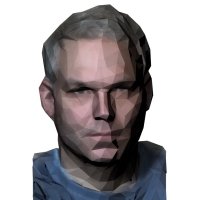
Henning Seide
bio
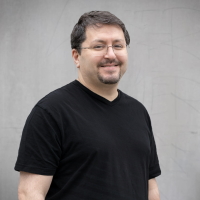
Ethan Kerber
bio
Ethan Kerber is the managing editor of the Journal on Construction Robotics and the CEO of Robots in Architecture Research, the commercial spin off of the Association for Robots in Architecture. He is a computational designer working at the intersection of Architecture, Engineering and Construction. Ethan has a Master’s degree in Industrial Design from the San Francisco State University and a Master of Engineering in Computational Design and Construction from the Hochschule Ostwestfalen-Lippe. He has experience in metalwork and digital fabrication with public sculptures permanently installed in Washington DC and Arlington Virginia. Ethan is currently a researcher at The Chair of Individualized Production where he is developing a doctoral dissertation on the Dynamic Process Models for Wire Arc Additive Manufacturing. The Chair of Individualized Production (IP) founded by Prof. Sigrid Brell-Cokcan in 2015 focusses on the use of innovative machinery in material and building production. In order to create an environment that allows the efficient, individualized production of lot size one, new and user friendly methods for man machine interaction are developed. IP employs researchers from different fields of robotics and building production to streamline the necessary digital workflow from the initial design to the production process; shaping the construction site of the future via intuitive, easy-to-use interfaces.

Tom van Mele
bio
Dr. Tom Van Mele is Senior Scientist and co-director at the Block Research Group (BRG) of the Institute of Technology in Architecture at ETH Zurich, where he leads the computational and technical developments, supervises the postdoc team, and advises and supports the PhD candidates on a day-to-day basis. Tom is the lead developer of COMPAS, the open-source computational framework for collaboration and research in architecture, structures and digital fabrication.

Antonello Di Nunzio
bio

Angelos Chronis
bio
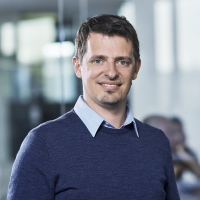
Manuel Frey
bio

Andreas Niggl
bio
Andreas Niggl is structural engineer with an additional background in scientific computing. He is working as Head of Development at SOFiSTiK, a leading European manufacturer of software for analysis, design and detailing in structural engineering.
One focus of his work is to provide software and tools to allow structural engineers to better integrate into general BIM workflows. One of the tasks there is to provide interfaces for Autodesk Revit, interfaces for IFC and for Rhino/Grasshopper.
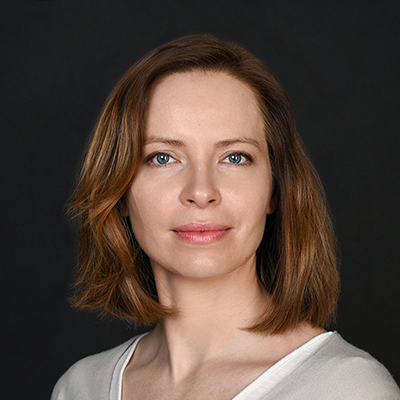
Edyta Augustynowicz
bio
Edyta is an architect and digital designer with diverse experience in the Swiss construction industry, architecture and academia. After receiving her MAS CAAD from ETH Zurich in 2010, she worked at DT at Herzog and de Meuron, ETH Zurich, ERNE AG Holzbau and FHNW. She is currently Professor of Digital Wood Fabrication at the Department of Architecture at the Bern University of Applied Sciences. Her interests focus on digital design and robotic wood fabrication processes, as well as redefining the role of the architect in digitised construction.
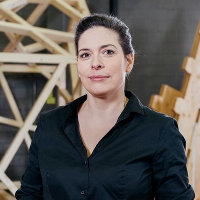
Ursula Frick
bio
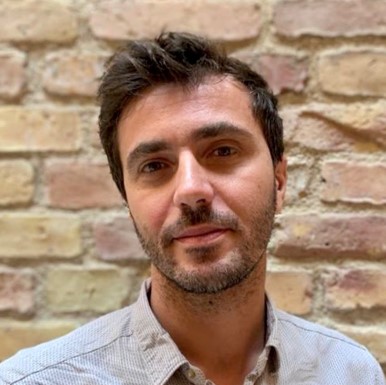
Giovanni Betti
bio
PROGRAM (click here)
LOCATION
Ackermannshof Basel
St. Johanns-Vorstadt 19/21
4056 Basel, Switzerland
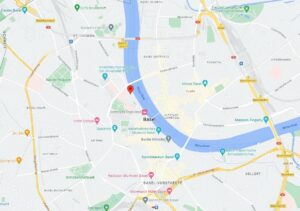
EXHIBITORS
SAEKI Robotics
SAEKI Robotics develops “RDM” (Robotic Digital Manufacturing) microfactories for on-demand fabrication of large scale components for the construction industry. SAEKI offers a flexible solution by combining 3D printing, milling, postprocessing and 3D scanning into one microfactory, operated by a robot. SAEKI has seen that computational design enables architects and engineers to come up with highly-efficient and bespoke designs, however, there is no cost-effective and sustainable method on the market to produce those. SAEKI provides a low waste production process through 3D printing and recyclable materials. SAEKI’s mission is to empower design freedom to be efficient and sustainable.
Adaptive Parts Environment
AdaptivePartsEnvironment makes the power of Grasshopper accessible to all Rhino users.
The Tool wraps Grasshopper-Definitions into dynamic objects or small applications with an integrated User Interface so anybody can use those tools without having to access (or know) Grasshopper. That way everyone can create and share their own tools and/or create libraries of “adaptive parts”.
Adaptive Parts Environment is developed by Rhenso (https://www.rhenso.com/), a spin-off from the 3d design office imagine-computation (https://www.imagine-computation.com/), which has been working in the automation of design processes for over 10 years.
ShapeDiver
With ShapeDiver, experts can share the full power of their parametric design files with partners, clients, and other non-technical stakeholders wherever they are while protecting their IP.
Lands Design
Lands design is software for designing gardens, green spaces and landscapes in Rhino. Lands provides tools for producing 2D and 3D technical drawings of any landscaping project, as well as realistic images and virtual tours. Lands has a plant database with more than 1800 species, each one with their own technical specifications and different display modes in 3D and 2D, ready for rendering, exporting plans, and season and growth simulation.
Lands Design also provides 3D terrain modeling tools for creating terrains from contours, elevation curves, point clouds or imported from internet. There are tools for adding cuts, fills, paths, holes or calculating the volume of land movement.
Packhunt.io
Packhunt is a platform for the computational community to build, share and sell their online tools. Built to make Grasshopper work in the cloud & run complex models fast and in a scalable way. Come visit our stand & join our Early Adopter Program for Free.
MESH
MESH offers robotic rebar solutions to the construction industry. We developed the world’s first technology to combine formwork and reinforcement within a digital planning and fabrication process. Our technology makes it possible to produce complex or curved reinforcement cages through an automated prefabrication process. The 3D steel-mesh structure created this way serves as both formwork and reinforcement and is filled by a specific concrete mix without using conventional formwork.
Chaos
Chaos is the global leader in developing high-quality real-time visualization tools and photorealistic ray-traced rendering. Our V-Ray and Enscape ecosystem creates an intuitive and powerful workflow for every step of the design process, from early planning stages to finished, physically-based, photorealistic rendering. Our technology is used by some of the world’s top architects, designers, and engineers to create stunning visualizations that help them bring their ideas to life. We’re excited to show you what we’ve been working on at this year’s Rhino Meetup in Basel!
For more information, visit chaos.com and enscape3d.com.
PAZ ACADEMY
PAZ Academy is an AEC center for training, research and consulting, specialized in parametric design and BIM Next Level projects through years of practical experience from Architectural to large scale Engineering projects. All these experiences are condensed in our own Building System Methodology with technology, creativity and innovation. PAZ solves Software & Hardware limitations, brings your teams together and create quality and transparency in your daily projects. PAZ accompanies you on your way into the digital future, offers a strong culture of innovation and ensures your success.
VisualARQ - Flexible BIM for Rhino
VisualARQ is a Flexible BIM solution powered by McNeel’s Rhinoceros 3D. VisualARQ adds architectural features to Rhino to work with powerful associative architectural objects, dynamic documentation tools and collaborate with other tools through the IFC import /export capabilities. VisualARQ integrates intuitively in the Rhino & Grasshopper design workflow with the shortest learning curve, thus generating any kind of free-form architecture.
Visualisierungs-Akademie
Software, training, and consulting from a single source. For 3D design, visualisation and animation.We offer you Rhinoceros, popular plugins such as V-Ray or VisualARQ, Twinmotion and much more.
Our training services include courses for architectural visualisation in cooperation with Nightnurse Images AG, Rhino and Grasshopper introductory and advanced courses, as well as a variety of other workshops, for example in Blender or After Effects.
As Visualisierungs-Akademie, we are a Rhino dealer in Switzerland since many years (3D-Software.ch) and we offer you the software as well as the corresponding courses from a single source. Of course, we are also happy to provide customised individual training for individuals or companies.

